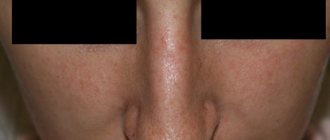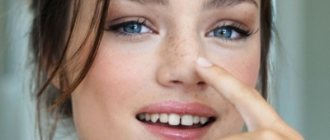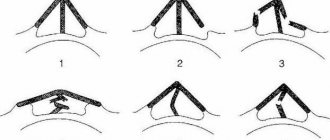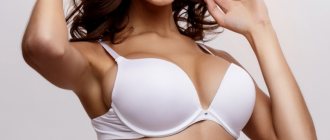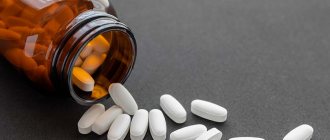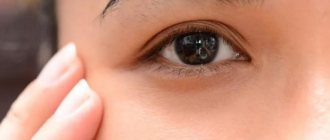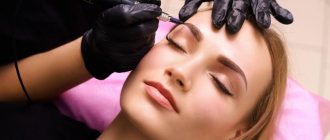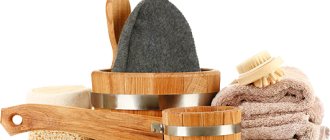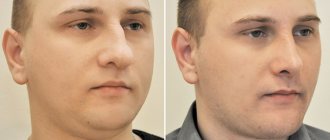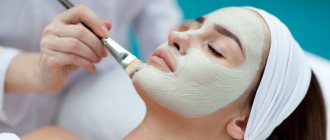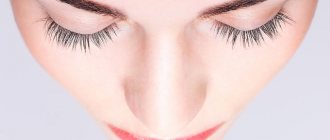Rhinoplasty is one of the most popular types of plastic manipulation. Not everyone is born with a nose that is ideal in shape and length. Experienced surgeons will help you change your appearance for the better. But you also can’t do without working on yourself. First, you need to understand exactly what you are getting into and how the procedure will be carried out. And from this perspective, consider the question of whether you can smoke after rhinoplasty or not.
First days
It is especially important to monitor and care for your nose during the first month after surgery. On the first day, the patient is monitored by a surgeon who assesses the patient’s condition after the procedure.
The first few days after rhinoplasty, the patient is under the supervision of a surgeon, who carries out all the necessary postoperative measures and finds out if there is any infection.
Over the next 2 months, the patient controls his rehabilitation independently. At this time, sports, visiting baths, swimming pools, saunas are prohibited; You can't wear glasses.
A special healthy diet is followed to promote healing.
After rhinoplasty:
- On the second or third day, remove the tampons, remove the splints from the nose and remove the bandages. It is better to do this with a doctor, since this action can be painful, with the use of painkillers.
- After surgery, treat the inside of the nostrils with sterile cotton swabs with the addition of hydrogen peroxide. This procedure is necessary to exclude the possibility of infection that can penetrate through the mucous membranes into the body.
- sleeping position after rhinoplasty: on your back, you cannot sleep on your side, especially on your stomach.
- fly on an airplane after the surgeon removes the tampons from the nose, usually one day after the procedure.
The use of cosmetics after surgery is possible only after the bandage is removed and the stitches are removed, in this way swelling and other traces of nose surgery can be temporarily masked. The surgeon will advise you on an individual basis about what cosmetics can be used. Decorative cosmetics are most often used.
You can go back to work with a nose job after removing the plaster.
Taking antibiotics is possible, but only after consultation with a plastic surgeon. This will depend on the reason for which such drugs are planned to be used. If inflammatory processes occur during the rehabilitation period, the doctor himself prescribes antibiotics in accordance with the treatment regimen.
After rhinoplasty you cannot:
- visit baths or saunas for at least 2 months, since temperature changes are contraindicated for the body.
- go to the solarium and sunbathe on the beach for 2 months, as ultraviolet and solar radiation can negatively affect the skin and cause increased pigmentation.
- wear glasses , since they, being on the bridge of the nose, compress it and can cause deformation, and therefore worsen the effect after surgery.
The final result of the operation can be fully assessed only after six months, when all swelling completely disappears and the contours of the nose become clearly visible.
Rehabilitation after rhinoplasty: what can cause complications
Rhinoplasty is a complex operation, after which negative consequences occur in every tenth patient. Complications after rhinoplasty can be associated both with the surgeon’s error and with the patient’s violation of the restrictions after the operation.
Poor qualifications of the surgeon can lead to the formation of scars due to damage to the skin or cartilage tissue. Scarring and adhesions in the future are quite difficult and long to treat. Damage to bone tissue also indicates a medical error, fraught with impaired respiratory function and an unsatisfactory aesthetic result. To correct it, a repeat operation is required, which is usually more difficult to perform, and the surgeon’s skill must be at its best.
The consequence of violation on the part of both the surgeon and the patient is severe bleeding that opens during the operation. A damaged large vessel or medications taken that affect blood clotting can lead to a similar complication.
Failure to comply with sterility rules leads to infection, if detected, it is important to immediately seek medical help. Unpleasant complications such as skin necrosis occur as a result of excessively excised surfaces. Repeated excision of damaged tissue avoids further development of tissue necrosis.
If the patient did not follow the recommendations of the postoperative period and removed the bandage prematurely or did not properly care for the nasal cavity, there is a possibility of sutures coming apart. This will require repeated intervention and suturing. Patients who do not take the doctor’s recommendations seriously can cause not only suture dehiscence, but also bone and cartilage tissue separation due to a momentary desire to show off a new nose.
Due to a surgeon's error, various disorders are possible due to a deviated nasal septum, for example, impaired nasal breathing or problems with the blood supply to the nasal passages.
Aesthetic complications caused by low qualifications of the surgeon include deformation of the nose in the area of the bridge of the nose, a too short or “beak-shaped” nose, severe asymmetry, and any other violations of the aesthetics of the nose. A complex consequence of medical error is excessive removal of bone or cartilage tissue, which may require tissue augmentation through implantation, contouring, or autotransplantation of patient tissue. To avoid the discrepancy between the outcome of the operation and the expected effect, it is important to undergo a preliminary simulation of the result in the clinic where rhinoplasty is supposed to be performed.
Proper facial care
High-quality facial skin care is very important both before and after nose surgery. A feature of the recovery period is the fact that the skin is under plaster for a certain period of time, where there is no way to clean it. In addition, after rhinoplasty, all areas of the face are treated with various antiseptics, which have a negative effect on it with prolonged use. After frequent application of antiseptics, the skin begins to peel off.
Why can our articles be trusted?
We make health information clear, accessible and relevant.
- All articles are checked by practicing doctors.
- We take scientific literature and the latest research as a basis.
- We publish detailed articles that answer all questions.
After surgery, an inflammatory process may occur on the skin of the face, which is expressed in the presence of acne, increased oiliness of the skin, and areas of flaky skin.
According to doctors' recommendations, you should not be afraid to touch your face, wash it every day, and gently wipe it with a hard towel. This procedure removes flaky skin and eliminates harmful bacteria.
After removing the plaster from the nose, it is recommended to wash your face with special scrubs designed to cleanse the pores of the skin. They must be applied by rubbing and then rinsing with a small amount of water.
Rhinoseptoplasty
Rhinoseptoplasty is a type of surgical intervention, the essence of which is to correct a deviated nasal septum, as well as change the shape and appearance of the nose.
When purchasing such products, you need to familiarize yourself with their composition and intended effect, since warming or cooling scrubs are not suitable for cleansing the skin after rhinoplasty.
There is a technology for rinsing the nose after rhinoplasty:
- Your head should be tilted to the side, over the sink.
- Inhale your breath for a few seconds.
- Apply a pipette with a rinse to the nostril and rinse it.
- After that, you need to blow off the contents remaining in it from the nostril. This is done carefully, blowing air out of the nostril with a slight movement, opening the mouth slightly and at the same time lightly pinching the other nostril with the tip of the finger.
- Rinse in the same way .
Most often, doctors recommend washing with seawater-based products. This procedure is required starting 3 or 4 days after surgery after removing tampons from the nose, with a frequency of 2-3 times a day for 1 month. After rinsing the nostrils, it becomes easier for a person to breathe, and the rehabilitation process is much easier.
Physiotherapy
During the rehabilitation period, many restrictions must be observed. They fully apply to a variety of cosmetic procedures. However, there are also special ones aimed at speedy tissue restoration and relieving undesirable consequences - swelling, hematomas, calluses.
Massage after rhinoplasty
In its usual form, massage is prohibited: active displacement of soft tissues will ultimately lead to displacement of bone tissues, held only by surgical sutures. However, there is one specific complication after surgery, which requires massage to remove.
Quite often, after correction, a hump appears on the back of the nose. This is a cartilaginous seal that can be removed by massage. As a rule, the course is only 3 sessions.
On your own, after the strips are removed, you can perform the following procedure:
- pinching the tip of the nose with two fingers, gentle pressure – 30 seconds;
- pinching the nose closer to the bridge of the nose – 30 seconds.
Such techniques are carried out up to 15 times a day. They allow you to somewhat reduce swelling and restore normal blood circulation.
The massage after surgery is reviewed in this video:
Microcurrents
Exposure to weak electrical impulses is used to restore tissue sensitivity and improve blood circulation. The procedure performs the same role after rhinoplasty. Due to tissue displacement during correction, the functioning of nerve endings is disrupted. As a result, patients often complain of numbness and numbness in this area. Microcurrents restore normal innervation.
As a rule, galvanization is prescribed 10–14 days after surgery, when the plaster splints are removed. Among other things, microcurrents improve peripheral blood circulation, and, therefore, help relieve swelling. Sessions are repeated every 2 days, the course includes from 5 to 10 procedures.
Phonophoresis
The procedure combines the effects of ultrasonic waves and medications. In this way, a more effective effect of medications is achieved. The fact is that for the most part, the active substances required to restore the skin cannot penetrate the horny barrier. Exposure to ultrasound expands the sweat and sebaceous ducts, through which the medicine enters the depths of the dermis.
Phonophoresis takes no more than 15–10 minutes. A medicinal product in the form of a gel is applied to the skin, and then the area is treated with an ultrasound probe. The procedure is completely painless and is prescribed to quickly relieve swelling and bruises. In addition, it allows you to supply the skin with vitamin and protein complexes.
Darsonval
Exposure of the skin to high frequency currents. In this case, small muscles contract, so that the patient experiences a characteristic tingling and tingling sensation during the session. Darsonval stimulates blood circulation and improves tissue innervation, while sensitivity is quickly restored and swelling goes away.
Darsonval is prescribed 7–10 days after removal of plaster splints. If you are highly sensitive to electric current, it is better to replace the procedure with microcurrents, in which muscle contraction does not occur.
The video below will tell you about the desired procedures after rhinoplasty:
Other
Other methods are also used during rehabilitation.
- “By default,” ultrasound is prescribed after rhinoplasty, regardless of how severe the swelling is and how cartilaginous growth appears. Exposure to ultrasound stimulates the walls of the capillaries, which leads to improved blood flow and, therefore, eliminates swelling. The first session is carried out 10 days after rhinoplasty. The course consists of 8 procedures, the effect is repeated at least once every 3 days.
- Laser processing is a more modern and expensive method. Exposure to laser radiation stimulates the work of the skin cells themselves, which accelerates the regeneration of soft tissue restoration. In addition, laser treatment prevents the appearance of scars. The first session is scheduled for 10–14 days, the course includes 10 procedures, they are carried out every day.
In any case, the procedure is prescribed by the doctor after examination and consultations - if necessary, with other specialists. It is prohibited to independently decide which methods are suitable and which are not.
Sports and physical activity after
After rhinoplasty, you cannot do serious stress not only in the nose area, but also in the entire body. The most important rehabilitation period is the first month after surgery.
Therefore, during this time, all physical activity and sports are completely excluded; even a strong forward tilt of the body can cause not very pleasant consequences.
At about 6 weeks, with proper care of the nose, swelling disappears, and the person adapts to the new condition. By this time, those patients whose surgical intervention was minor can return to sports activities.
After serious changes to the nose, the rehabilitation period is 3 months, after which you can return to your normal lifestyle.
Blepharoplasty
Upper eyelid blepharoplasty
This operation is practiced for the problem of eyelid ptosis and age-related changes in the eyelid area (excess skin, fatty hernias). Plastic surgery is relatively simple, so it is often performed under local anesthesia - the anesthetic is injected directly into the eyelid. The surgeon then removes excess skin, eliminating sagging. The external incision is made along the natural crease of the eye, so the scars remain invisible. Then the doctor excises a flap of skin and applies stitches. Plastic surgery lasts no more than an hour. If healing is normal, the sutures are removed after 3-5 days.
The cost of the operation starts from 40 thousand rubles.
Lower eyelid blepharoplasty
Very often, along with upper eyelid surgery, surgery to correct the lower eyelids is performed. This is a more complex operation, since not only the skin is removed, but also periorbital fat deposits. The surgeon cuts the skin at a distance of 1 mm from the eyelashes, fat is removed through the incision, and the skin is simultaneously excised. Then an intradermal suture is applied, which is completely invisible behind the ciliary edge. The stitches are removed after 4-6 days. It must be said that with the help of this plastic surgery it is often impossible to completely get rid of wrinkles under the eyes, and here botulinum toxin injections come to the rescue.
An interesting type of lower eyelid plastic surgery has become intraoral blepharoplasty, in which the surgeon, as you might guess, reaches the patient’s fatty hernias through the oral cavity. In this case, the hernia is not removed, but separated and sutured to the soft tissues at the lower edge of the eye orbit. This type of plastic surgery is not suitable for everyone, just like transconjunctival blepharoplasty. The latter operation is suitable for young patients and middle-aged people whose skin has retained its elasticity and only needs to remove fatty hernias. The incisions in this case, as the name suggests, are made inside the conjunctiva.
The cost of lower eyelid surgery starts from 50 thousand.
Diet after
Surgical intervention is a factor of additional burden on the body in the form of stress, after which the tissues require restoration of the supply of vitamins, minerals and other nutrients.
The rehabilitation period involves a temporary restriction in certain foods and a specialized diet that must be followed for 2 months.
You can eat food 5-6 times during the day, but in small portions. In small volumes, food entering the body will be absorbed faster.
You can't eat:
- roast;
- salty;
- smoked;
- spicy;
- pickled;
- pasta;
- sweets;
- from meat - lamb, pork, goose meat.
Plastic surgery of a hump on the nose
In some cases, a hump makes it difficult to breathe, leading to more serious problems, so hump rhinoplasty is recommended in such cases.
All dishes that are prepared at home should be steamed or boiled; to make cooking easier, you can use a double boiler.
You can and even should eat:
- meat without fat - chicken, beef, turkey;
- lean fish;
- fermented milk products ;
- from cereals - oatmeal, pearl barley and buckwheat (no more than 200 grams);
- vegetables in unlimited quantities - tomatoes, cucumbers, radishes, zucchini;
- figs, apricots, dried apricots;
- crackers, rye bread;
- from liquids - green tea, compote, fruit drink, jelly.
The volume of water consumed per day should be at least 2 liters, thus speeding up metabolism and food is digested much faster. Following such a diet during the first 2 months after plastic surgery helps to normalize metabolic processes in the body, protects it from excessive stress and stress, and does not cause swelling.
All norms of a rational diet must additionally be explained to the patient by a surgeon who is interested in the speedy appearance of the result of a successful operation.
Necrosis
This term is used to refer to the process of tissue death. It may be provoked by:
- infectious diseases;
- lack of supply of nutrients through the blood to certain parts of the body.
In the last paragraph, one of the most significant factors should be highlighted - reduced immunity due to the influence of nicotine. It constricts blood vessels. Vasospasm increases blood pressure and leads to deterioration of blood microcirculation to tissues. Oxygen does not enter the cells of smokers. And in a postoperative state of stress, the body is not able to activate internal reserves. As a result, instead of a perfect nose, a person will receive blackened areas that will have to be removed surgically, sutures, etc. Necrotic masses grow quickly and, in the absence of adequate treatment, can lead to death.
Therefore, if you decide to change your appearance, you should start with your attitude towards your own health. If a person smokes almost all his life, then it is quite difficult for him to give up this habit. According to psychologists, the main thing is to hold out for 21 days. During this period, the smoker will feel “withdrawal” and anger (the effects of nicotine on the nervous system are known). To mitigate the effects of withdrawal, some use nicotine patches, others use e-cigarettes. However, there are no safe ways to smoke. And it is important that before the operation there is no nicotine in the body at all.
Hair washing procedure after
After a nose job, you should not take a hot shower; to avoid high temperatures, you should only use warm water when washing your body and head.
The method of washing your hair without outside help will be difficult, since during this procedure you should not allow your nose to tilt forward.
If you do not maintain the correct body position when washing your hair, you can get a deformation of your nose that has not yet healed. It must be carried out as in a hairdresser, throwing your head back so that the hair flows down over the sink or bathtub, and the position of the nose remains unchanged.
How does healing occur and after how many days are the threads removed?
The fastest healing of sutures after blepharoplasty is considered to be if they were applied with self-absorbing threads. Removal of sutures is usually scheduled one week after surgery. Complete healing of scars occurs after 3 months.
Stages of suture healing after blepharoplasty:
- Exudation, inflammation phase. In the first week, the patient may experience an inflammatory process. His eyelids swell, turn blue, and water profusely (we talked more about swelling of the eyelids and eyes after surgery here). This period is very dangerous because the stitches may come apart, so careful care is required for the eyes in the first week.
- Granulation stage. This phase lasts one month after surgery. Granulation is when new connective tissue forms at the site where the eyelid was cut. After a month has passed, granulation disappears and a pink scar is obtained.
- After granulation, the scar becomes discolored. This stage will last another month, during these 4 weeks the pink scar becomes white and smooth.
Smoking and drinking alcohol after
Even in everyday life, smoking and drinking alcohol cause global harm to the human body. After surgery, they are especially prohibited, since a person’s immune system is reduced during the postoperative period. Alcohol after rhinoplasty can have a negative effect on blood flow.
Sports after rhinoplasty
Many physically active patients want to continue exercising after rhinoplasty.
The blood supply to the many small vessels of the nose, through which oxygen-enriched blood continuously flows, has a great influence on the rehabilitation process. If the blood vessels of the nose are poorly oxygenated, recovery after surgery may slow down and lead to unwanted complications.
Drinks containing alcohol have several features that slow down the rehabilitation period after rhinoplasty:
- when alcohol enters the blood, a sharp expansion of the blood vessels occurs, and then their rapid narrowing; such changes in blood flow lead to disturbances in blood flow;
- thrombosis can form in it , which also makes it difficult for oxygen to enter the vessels of the nose.
After nose surgery, the risk of blood clots in the operated area increases several times, so even taking small doses of alcohol is prohibited for 1 month.
There are several other reasons to consider that you should not drink alcohol after rhinoplasty:
- swelling increases , which goes through a rehabilitation period;
- deterioration metabolic processes implies a slow recovery process;
- medications prescribed by the doctor may not be compatible with the effects of alcohol;
- When drunk, a person loses coordination of movements and a sense of self-regulation, which can cause injuries to the nose.
How to reduce your nose with potatoes
A large nose, or as it is also called, a potato nose, is not a pathological condition, but a natural defect associated with the individual structure of the cartilage and bones of this organ.
Surgeons also recommend that all patients stop smoking after surgery for 1 month. Substances contained in a cigarette, such as carbon monoxide and nicotine, contribute to rapid vasoconstriction, after which the circulatory system of the nose is disrupted.
Passive smokers get the same effect as active smokers. After these components enter the body, blood stagnation may occur, which causes tissue thrombosis.
Possible complications
The slightest touch to the nose can cause deformation of the nose, and the operation will need to be repeated. Touching the bridge of your nose, putting on glasses and moving your facial muscles is extremely dangerous. But an even more difficult problem will be the appearance of a runny nose, which will clog your breathing. The influence of smoking in this case is also obvious. After all, a smoker has a lowered immune system, and his body is unable to cope with even a mild illness.
And the slightest incorrect tilt of the head or muscle movements can change the shape of the nose. The smoker takes deep breaths and exhales. It is not difficult to imagine how a swollen face will strain in this case.
Surgeons often hear the question, is it possible to smoke after rhinoplasty? And even having received a clearly negative answer, patients think that the problem is artificially inflated and “little by little” is still possible. However, after the operation, the realization comes that the postoperative period is more difficult than even the operation itself. Aching pain and the required precision in daily movements often lead to stress. And if during this period a person himself acts as an enemy to his health, then the most detrimental consequences can be expected:
- tissue necrosis;
- thrombosis;
- heavy bleeding;
- changes in drug metabolism during anesthesia;
- deterioration of blood clotting, and as a result – problematic healing of sutures;
- leveling the results of the operation.
